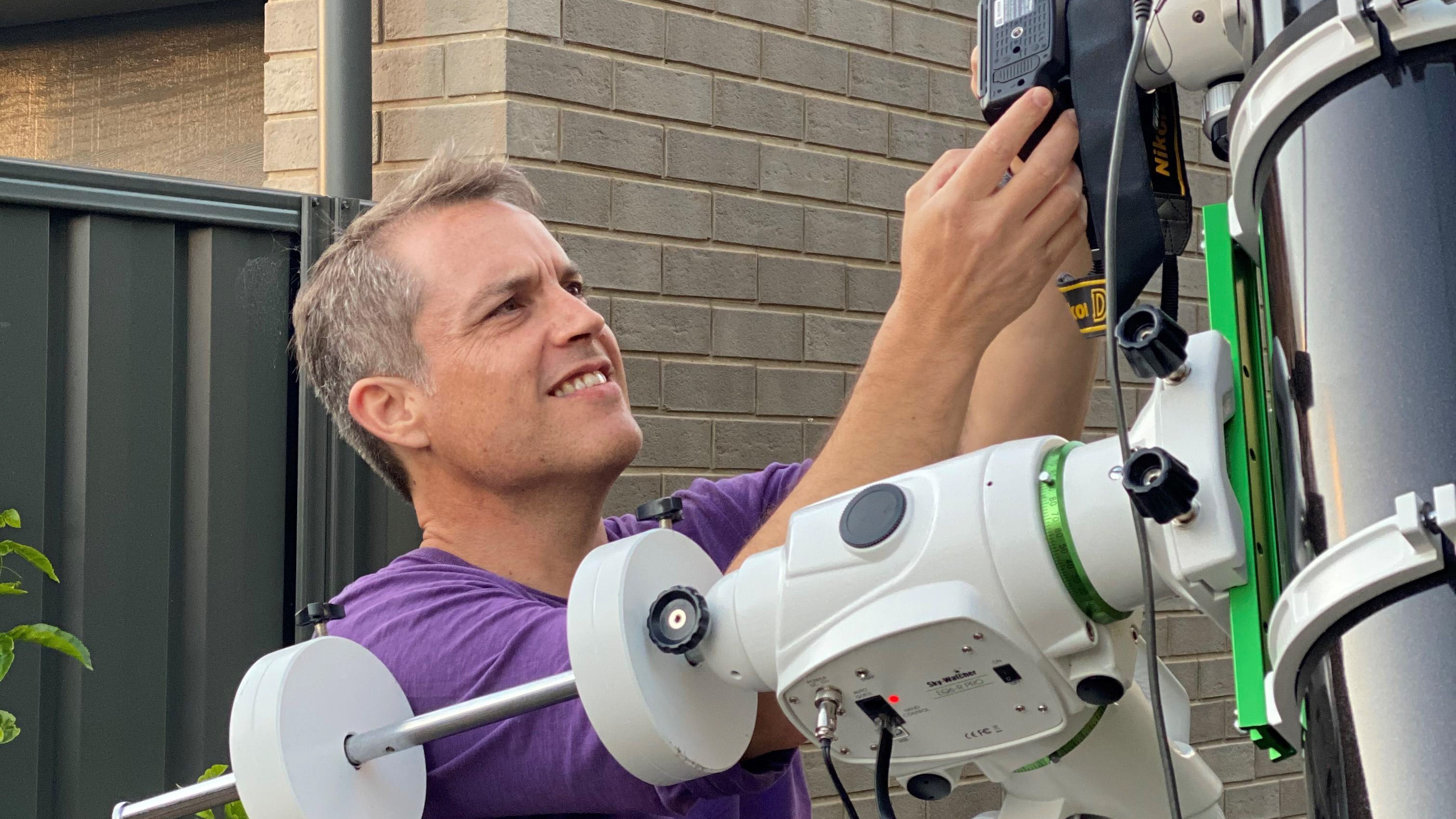A Penguin, in Space!
Updated 15 February 2024
Probably the world's first ever published colour image of Bran 72 / BBW 72 in the constellation Puppis.
Coordinates: 07 47 51, -36 09 47
A 1000mm Newtonian Telescope was used along with a mono astronomical camera cooled to -15 degrees Celsius, to collect 55 x 600 second exposures in Hydrogen alpha, 76 x 600s in ionised Oxygen and 54 x 600s in ionised Sulphur. This crop is roughly 40 arc-minutes across.
In this image, those exposures are allocated SHO (RGB) with most of the Hydrogen shifted from green to gold.
I first noted Bran 72 in this very widefield image (below) I collected in SHO using the same camera and a 50mm camera lens. The image covers approximately 15 degrees of sky on each side, a large portion of the constellation Puppis. In the upper left corner is part of the Vela Supernova Remnant, just left and beneath centre is Bran 56 the "Dusty Mountain", which I had previously imaged.
I had come back to Puppis thinking perhaps there would be some interesting and less often imaged features to find, so I had been surveying this very wide field in mid-January, 2024.
After 20 January, I spent about a week processing this image and then searching both it and astronomical catalogues, looking to see what had been revealed in the picture.
Naturally, most features had already been catalogued, but just as I was about to move on, something faintly blue caught my eye.
Can you spot the Space Penguin?
Our little Penguin is just up from and slightly to the right of centre in the image above.
It has a very faintly blue-green tinge, amidst all the gold. In most pictures of this region - often referred to as the "Gum Nebula" - all the nebulosity you see here is faintly pink in colour, due to the predominance of hydrogen.
There are many challenges imaging widefield like this - something like 15 - 20 arc-seconds of sky are captured in a single pixel whereas the aim in astrophotography is to achieve close to 1 arc-second per pixel. This means many "small" nebulae will not be picked up in the images.
Further, camera lenses will sometimes yield less than sharp stars, can present reflections and smudges, and so on.
The first task was to confirm whether my "blue thing" was really a thing or just an aberration. I did that by taking the 50mm lens off the camera and replacing it with a 300mm lens.
Here is the result:
Although it is easy to see (particularly in the pink HOO (Hydrogen in R, Oxygen in G and B) image) how the Space Penguin has been missed since it was first noted in or about 1986, some detail now started emerging.
It was possible to confirm that there were no issues with the lenses or filters causing what had been seen in the 50mm image.
More interestingly, when heavily zoomed in, certain features reminiscent of star-forming regions became apparent. Similar to the famous Pillars of Creation in the Eagle Nebula / M16.
Having confirmed there was a defined object in the images, plate-solving was used to identify its position. Those coordinates were searched in CDS / SiMBAD, with the results holding very few nebulous objects amongst a long list of stars and some galaxies.
Some cold clumps had been detected nearby, along with Bran 72 - which appears to only have been referenced in the original papers written by Brand, Blitz and Wouterloot in 1986 and 1987. It was listed in the catalogue and given an apparent size of about 18 arc-minutes - the same size and position appearing in my images.
It appears as though our little Penguin was not of much interest in that research, as no CO was detected. Perhaps this is why it has been overlooked for at least 37 years.
Between 2 and 4 February 2024 I collected the 1000mm exposures, using the 200mm aperture of the Newtonian to assist in bringing out finer details inside Bran 72. If the weather holds, I will at least double the 12 hours of exposure collected so far, to help bring out more detail and reduce the noise.
For now, this little bird joins the flock in the sky, including the Seagull (IC 2177), the Eagle (M16), the Swan (M17) and the Pelican (IC 5070).
I am hoping to see many more pictures of the Space Penguin and who knows, maybe some Hubble, JWST and / or Spitzer images to reveal any star formation that is occurring.



